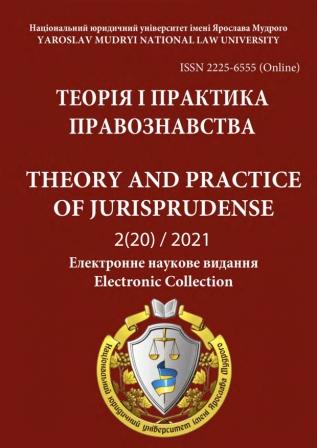Об’єкти запобігання злочинності та корупції
Crime and corruption prevention objects
Author(s): S. Yu. LukashevychSubject(s): Criminal Law, Criminology, Victimology, Corruption - Transparency - Anti-Corruption
Published by: Національний юридичний університет імені Ярослава Мудрого
Keywords: criminology; crime prevention; corruption prevention; victimology prevention; object of prevention;
Summary/Abstract: Under today’s conditions, humanity and all social and state formations, including Ukraine, as part of the world order, is experiencing many changes: we are in a radically new political, economic, spiritual and ideological situation compared to the end of the twentieth century; its main features are socio-economic stagnation, political, cultural, educational and moral-psychological uncertainty, activation of old and the emergence of new stressors at the level of both individual and group (and even mass) consciousness. The complexity and contradictions of socio-economic and political development of our country necessitate the theoretical understanding and development of scientifically sound tools with which to make more effective the process of social interaction, non-criminogenic development of society, crime prevention and counteraction. Without theoretical knowledge that directly serves a specific state-building practice, it is impossible to fulfill a strategic task - to build a democratic state and civil society in Ukraine. Scientists rightly point out that the current criminal situation is characterized by new types of crime, dynamism of development, unpredictability of changes, spread of organized forms and professionalism and the inability of the state to resist corruption necessitates the effectiveness of the fight against crime. The purpose of this article is to study the objects of crime and corruption prevention, to determine their essential characteristics and to separate them from other objects of social reality. The methodological basis of the work is the dialectical method, the application of which allows to study the object and subject of research in their epistemological unity, relationship, as well as differences. The technique used in writing the article consists of several basic methods of scientific knowledge. Using the historical method, historical and general theoretical questions of the essence of the object of crime prevention and corruption are clarified. The use of methods of analysis and synthesis made it possible to separate the objects of prevention from other objects of social reality - this was also facilitated by the use of the structural-functional method. These methods also allowed to investigate the theoretical views on the nature and elements of the object of crime and corruption prevention. The logical-semantic method was used to determine the relationships and mutual influences of crime prevention and corruption objects with other objects. Scientific abstraction and generalization of scientific and theoretical information as a process of establishing general properties and signs, allowed to reach and formulate final conclusions on the subject of research. Based on the considerations set out in the article, it can be noted that the objects of preventive influence on the prevention of crime and corruption are negative phenomena and processes of reality of material or spiritual nature, which lead to causes and conditions conducive to crime. This should keep in mind the properties that are common to such objects, namely: criminogenicity; dynamism; potentiality; latency. Separate objects are objects of victimological influence. Information sources of various origins are covered, which testify to the origins of mass, group, individual victimization and the presence of dangerous victimhood at these levels, to which the theory and practice of victimological crime prevention are directed. , and the special objects of victimological prevention are social and psychological factors of victimization and victimhood as objects of preventive victimological influence at the individual level. Specific objects are the objects of influence in the prevention of corruption, which include: corruption-causing factors; corruption risks in the activities of public authorities, local governments, legal entities of public and private law and their officials; illegal behavior of officials and officials of public authorities and local governments. Thus, a deep and comprehensive knowledge of the nature of criminogenic objects, their scientific, historical and epistemological research will serve as a basis for understanding the danger of this social phenomenon and finding appropriate effective methods, tools and measures to influence it. The state must prevent crime by influencing certain criminogenic objects, which in essence will be the object of crime and corruption prevention at various levels of preventive activities – general social, special criminological, individual, as well as in the implementation of victim prevention measures.
Journal: Теорія і практика правознавства
- Issue Year: 2/2021
- Issue No: 20
- Page Range: 200-213
- Page Count: 14
- Language: Ukrainian

